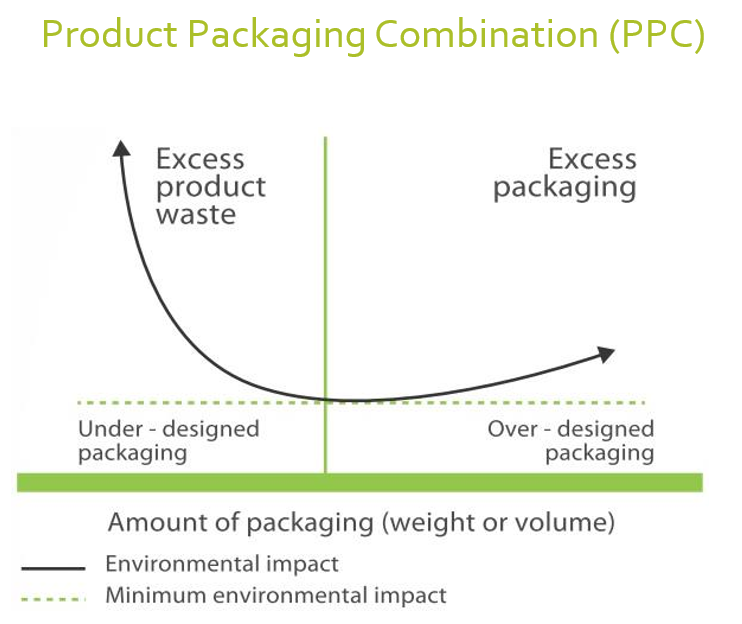
The image shows that the environmental impact usually increases more rapidly for under-designed packaging (left-hand side of the diagram) than for over-designed packaging (right-hand side of the diagram). It is therefore important to find the right balance between product protection and material usage. This goes for both food products, where spoilage must be prevented, and non-food products, where damage during transport and logistics must be avoided.